How to Look and Feel 20 Years Younger

Do you want to lose weight, erase wrinkles and get energized? Bob Greene says it is possible. Along with a team of top experts—dermatologist Dr. Harold Lancer, sleep expert Dr. Ronald Kotler and nutritionist Diane McKay—Bob has written a new book called 20 Years Younger that he says can help you reverse the effects of aging.
"The important part is you feel 20 years younger, and your body functions as if it were 20 years younger," Bob says.
His program is built around four pillars: Exercise, nutrition, skin care and sleep. According to Bob, incorporating these pillars into your life can change your physiology, which will slow down aging and cause your body to function as if you were years younger.
"The important part is you feel 20 years younger, and your body functions as if it were 20 years younger," Bob says.
His program is built around four pillars: Exercise, nutrition, skin care and sleep. According to Bob, incorporating these pillars into your life can change your physiology, which will slow down aging and cause your body to function as if you were years younger.
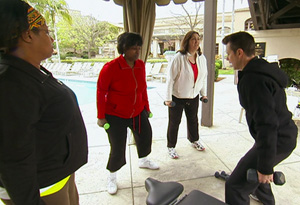
Bob says there is one nonnegotiable element of his program: exercise. "Make it like an appointment that you simply won't cancel," he says.
Watch Bob give a lesson in working out
According to Bob, everybody—beginners included—should start with a minimum of 200 minutes of cardio per week, which is about 3 and a half hours. He also says to never walk on a flat treadmill. "A flat treadmill is like walking downhill. The value of exercise isn't in the burning of calories; it's in the change of your metabolism the other 23.5 hours of the day."
Lifting weights is also critical, Bob says. "The key to strength training is you tighten your abdomen. That stabilizes your whole body." Finally, make sure to stretch it all out when you're done.
"It's really about challenging [yourself] no matter what level you're at, and you'll work your way up," Bob says.
Watch Bob give a lesson in working out
According to Bob, everybody—beginners included—should start with a minimum of 200 minutes of cardio per week, which is about 3 and a half hours. He also says to never walk on a flat treadmill. "A flat treadmill is like walking downhill. The value of exercise isn't in the burning of calories; it's in the change of your metabolism the other 23.5 hours of the day."
Lifting weights is also critical, Bob says. "The key to strength training is you tighten your abdomen. That stabilizes your whole body." Finally, make sure to stretch it all out when you're done.
"It's really about challenging [yourself] no matter what level you're at, and you'll work your way up," Bob says.

The next pillar is nutrition, because according to Bob, eating the right foods can add years to your life. "The 20 Years Younger diet was developed with many things in mind, but primarily [asking], 'What elements do you bring to your diet that can improve your aging, and what can you take off that accelerates aging?'" Bob says.
Bob and dietitian Janis Jibrin say every meal should include superfoods that will help you look years younger, such as sweet potatoes, eggplant and blueberries. They also believe that half your plate should be covered with fruits and vegetables.
Watch Bob and Janis explain the ideal meal plan
"I'll go on record. I used to hate brussels spouts," Bob says. "I hated them until I started making them the right way. If they're sautéed and you use olive oil, which is another superfood, they're fantastic."
Bob also swears by replacing fattening starches—such as breads, cereals and pastas that are made with white flour—with whole grains, brown rice and lentils. He says good high-protein choices are fish, chicken or soy. Also, adding spice to your dishes can help you live longer. Herbs and spices, such as ginger and basil, can help fight infection and chronic diseases.
Bob and dietitian Janis Jibrin say every meal should include superfoods that will help you look years younger, such as sweet potatoes, eggplant and blueberries. They also believe that half your plate should be covered with fruits and vegetables.
Watch Bob and Janis explain the ideal meal plan
"I'll go on record. I used to hate brussels spouts," Bob says. "I hated them until I started making them the right way. If they're sautéed and you use olive oil, which is another superfood, they're fantastic."
Bob also swears by replacing fattening starches—such as breads, cereals and pastas that are made with white flour—with whole grains, brown rice and lentils. He says good high-protein choices are fish, chicken or soy. Also, adding spice to your dishes can help you live longer. Herbs and spices, such as ginger and basil, can help fight infection and chronic diseases.
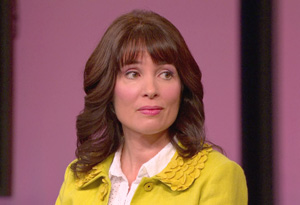
Even though the 20 Years Younger plan recommends eating about 1,700 calories a day, it's important to remember that healthy eating isn't just about counting calories. Janis says certain superfoods can be a fountain of youth and significantly improve your health.
"[For the plan] we chose specific foods—almonds, eggplant, high-fiber grains—that lower the cholesterol," Janis says.
She also has an easy trick for packing more nutritional punch into every meal: Make your plate colorful. According to Janis, the more color on your plate, the higher the nutritional value. "You're getting a wealth of phytonutrients that way."
Watch this class on healthy cooking!
"[For the plan] we chose specific foods—almonds, eggplant, high-fiber grains—that lower the cholesterol," Janis says.
She also has an easy trick for packing more nutritional punch into every meal: Make your plate colorful. According to Janis, the more color on your plate, the higher the nutritional value. "You're getting a wealth of phytonutrients that way."
Watch this class on healthy cooking!
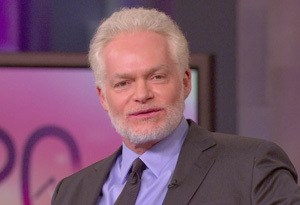
The next pillar to focus on is skin care. Dermatologist Dr. Harold Lancer says he can tell if somebody is healthy or not just by looking at their skin. "Skin care will make you look better, and mixed with a healthier lifestyle, you're a winner," Dr. Lancer says.
He recommends three simple steps to combat aging:
On top of a good skin care routine, it's important to avoid common mistakes—like going to bed with your makeup on. "That's the worst thing you can do, because you have all those toxic chemicals there, just eating away the entire nature of the skin," Dr. Lancer says.
He recommends three simple steps to combat aging:
- Polish: Polishing removes the debris.
- Cleanse: Wash off what was lifted by the polish.
- Nourish: Add nutrients to your skin, which will improve its antioxidant and protein levels.
On top of a good skin care routine, it's important to avoid common mistakes—like going to bed with your makeup on. "That's the worst thing you can do, because you have all those toxic chemicals there, just eating away the entire nature of the skin," Dr. Lancer says.
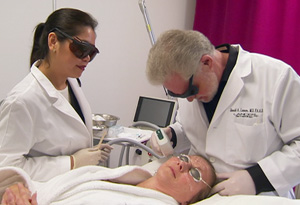
One thing that might surprise people about the 20 Years Younger plan is that injectables like Botox are presented as an option. "It's a personal choice," Bob says.
Dr. Lancer says that skin care always comes first, but once you're successful with that, you can start looking into other options to improve your skin. "It's designed for minimizing or reducing the excessive muscle movement creation of lines and folds. It's not meant to make you look like a mannequin," Dr. Lancer says.
Botox and fillers are quick ways to soften unwanted age lines, and laser treatments can be used to reduce age spots, he says.
Watch Dr. Lancer give skin makeovers to some Oprah Show Ultimate Viewers
Dr. Lancer says that skin care always comes first, but once you're successful with that, you can start looking into other options to improve your skin. "It's designed for minimizing or reducing the excessive muscle movement creation of lines and folds. It's not meant to make you look like a mannequin," Dr. Lancer says.
Botox and fillers are quick ways to soften unwanted age lines, and laser treatments can be used to reduce age spots, he says.
Watch Dr. Lancer give skin makeovers to some Oprah Show Ultimate Viewers
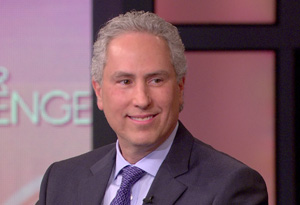
The last pillar of the 20 Years Younger plan is sleep. According to the CDC, up to 70 million Americans say they don't get enough. Bob says if you're not getting seven to nine hours a night, you are putting your health at risk.
"We know that if you don't get enough sleep, it can actually shorten your life," sleep expert Dr. Ronald Kotler says. "It can contribute to problems like diabetes and obesity."
Most people don't think of sleep as something that can make them fat, but Dr. Kotler says it's definitely a contributing factor. "While you're sleeping, the brain makes this chemical called leptin. Leptin is involved in suppressing your appetite, so that if you're not sleeping enough and you're not making enough leptin, you're going to be hungry all day. And if you're going to be hungry all day, you're going to eat and put on weight...then you put yourself at risk for sleep apnea, and it becomes a vicious cycle," he says.
See how Dr. Kotler helped two Ultimate Viewers get their sleep back on track
"We know that if you don't get enough sleep, it can actually shorten your life," sleep expert Dr. Ronald Kotler says. "It can contribute to problems like diabetes and obesity."
Most people don't think of sleep as something that can make them fat, but Dr. Kotler says it's definitely a contributing factor. "While you're sleeping, the brain makes this chemical called leptin. Leptin is involved in suppressing your appetite, so that if you're not sleeping enough and you're not making enough leptin, you're going to be hungry all day. And if you're going to be hungry all day, you're going to eat and put on weight...then you put yourself at risk for sleep apnea, and it becomes a vicious cycle," he says.
See how Dr. Kotler helped two Ultimate Viewers get their sleep back on track
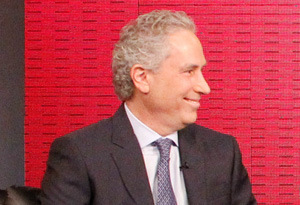
Dr. Kotler says our sleep problems date back to the invention of the lightbulb. "Televisions and computers and the bright lights they emit keep us awake, because light is a very important cue to stay awake," he says.
One of the biggest mistakes people make is turning on the television late at night. "That bright light fools the brain into thinking it's time to be awake when, in fact, you want darkness," Dr. Kotler says. He recommends getting rid of all lights in your bedroom at night, except for maybe a very dim safety light.
The type of mattress you're using can also make a big difference. "As we get older, we can't sleep as well because we spend less time in our deep, refreshing sleep. We develop medical problems that make us more vulnerable to aches and pains. So really for the adult, a mattress is vital, and it's a very important investment," Dr. Kotler says.
Get more sleep secrets from Dr. Kotler
Are you ready to start the 20 Years Younger challenge? Go to 20yearsyounger.com now to sign up and get one month free!
One of the biggest mistakes people make is turning on the television late at night. "That bright light fools the brain into thinking it's time to be awake when, in fact, you want darkness," Dr. Kotler says. He recommends getting rid of all lights in your bedroom at night, except for maybe a very dim safety light.
The type of mattress you're using can also make a big difference. "As we get older, we can't sleep as well because we spend less time in our deep, refreshing sleep. We develop medical problems that make us more vulnerable to aches and pains. So really for the adult, a mattress is vital, and it's a very important investment," Dr. Kotler says.
Get more sleep secrets from Dr. Kotler
Are you ready to start the 20 Years Younger challenge? Go to 20yearsyounger.com now to sign up and get one month free!



